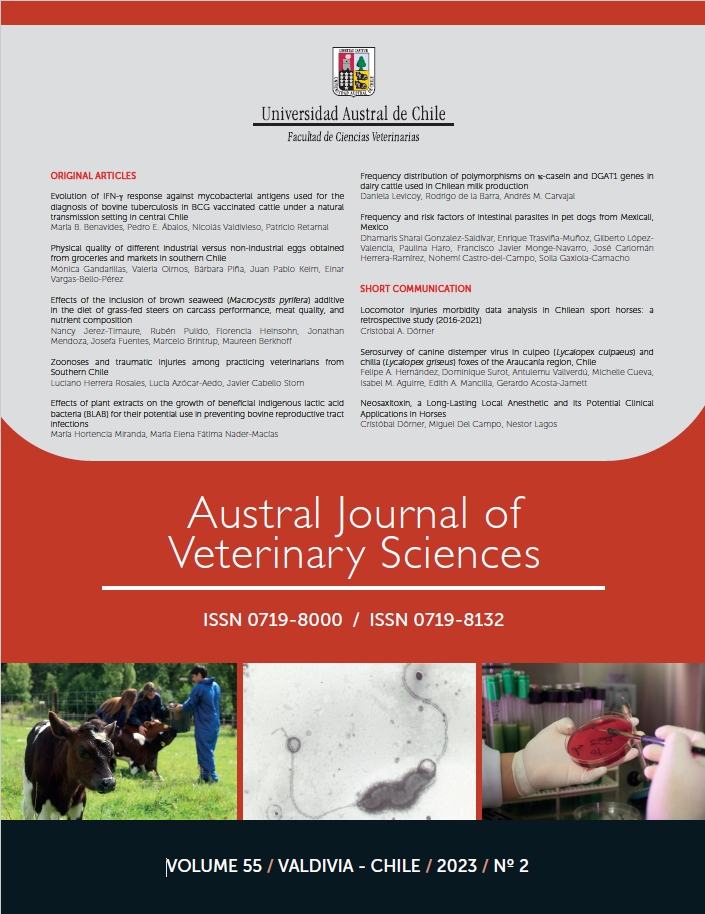Frequency and risk factors of intestinal parasites in pet dogs from Mexicali, Mexico
Main Article Content
Abstract
Parasitic intestinal infections in dogs represent a problem for human health, because a wide variety of these parasites have zoonotic potential. Therefore, proximity to pets puts us at risk. The objective of this study was to determine the frequency and risk factors (age, sex, size, breed, presence of ectoparasites and gastrointestinal disorders) of intestinal parasites in the feces of dogs attending a Veterinary Hospital in the City of Mexicali, Baja California, Mexico. A total of 148 fecal samples were collected from canine patients and analyzed for parasite identification and parasite load. A 12.2% (18/148) of the samples were positive to parasitic intestinal infections. The frequency of specific infections was an 8.1% of Cryptosporidium sp., followed by a 2.7% of Cystoisospora sp., and 1.4% of Toxascaris leonina. A statistical significance was identified between the presence of intestinal parasites and mongrel breed. The predominance of protozoa shows the importance of diagnosis prior to treatment with anthelminthic drugs, since preventive antiparasitic protocols are commonly used, although these particular parasites are out of the spectrum of those drugs. Cryptosporidium spp. have zoonotic potential, particularly in immunocompromised patients, and there are few or no treatment options.

